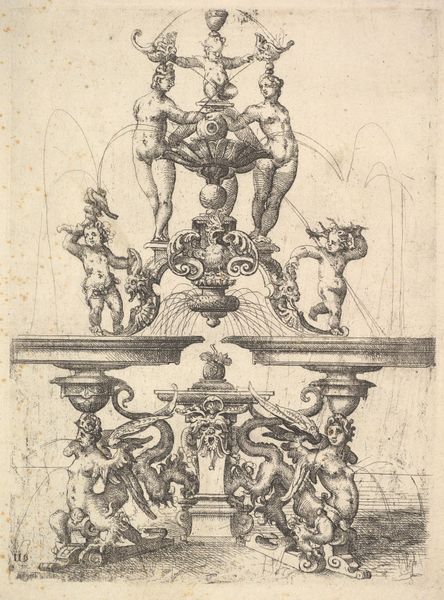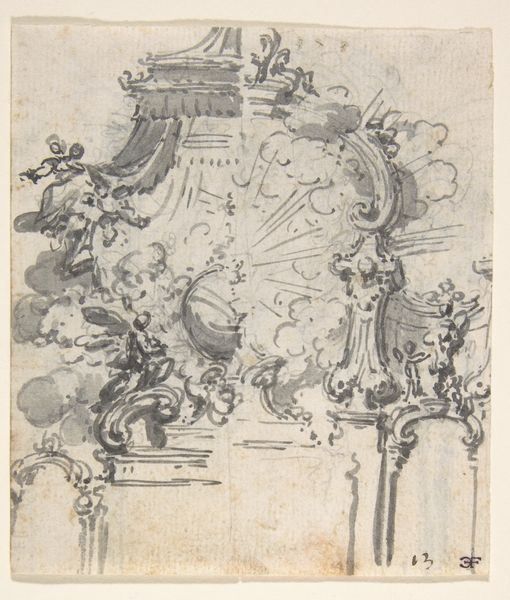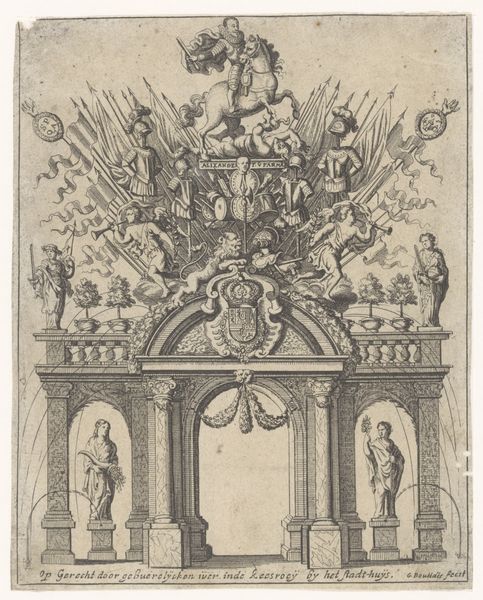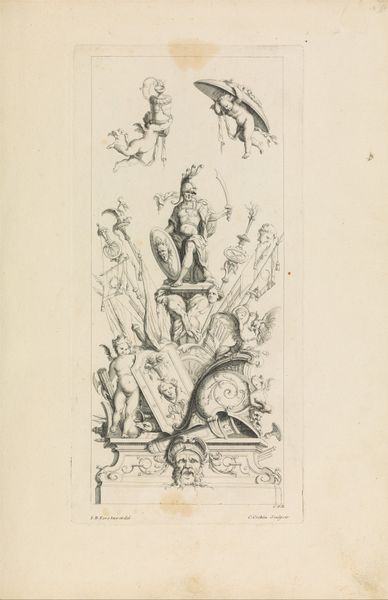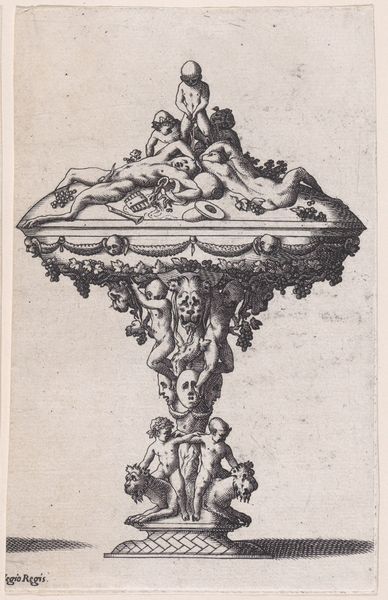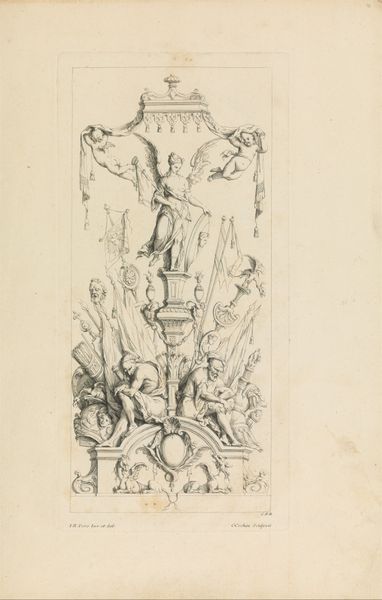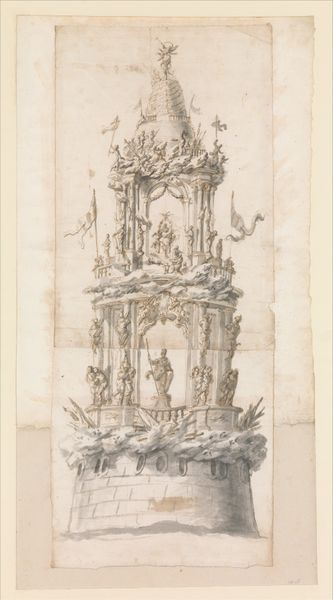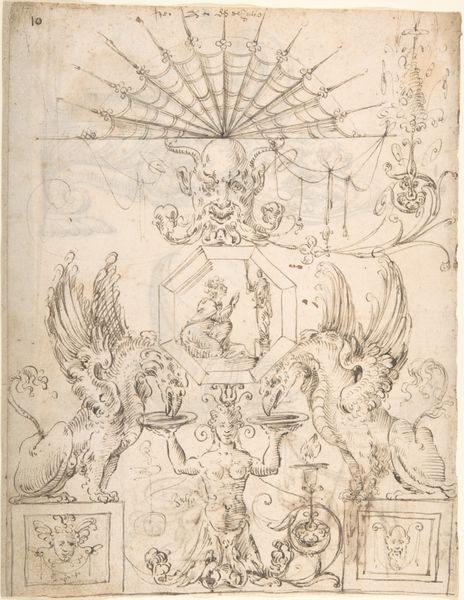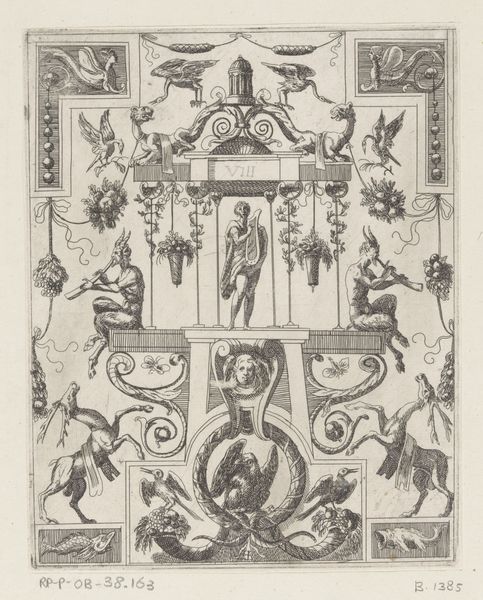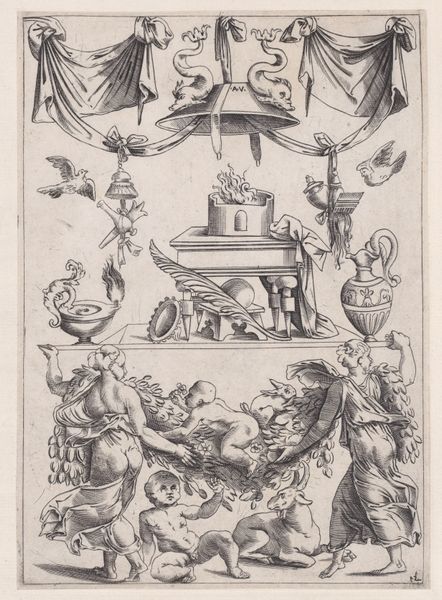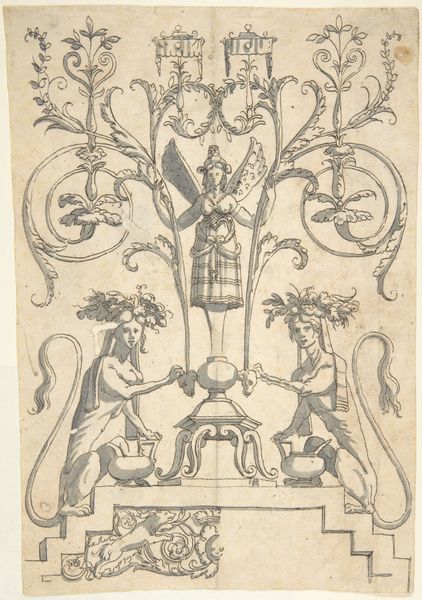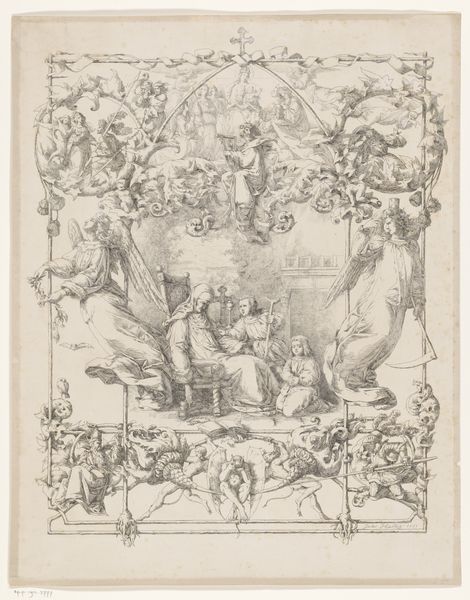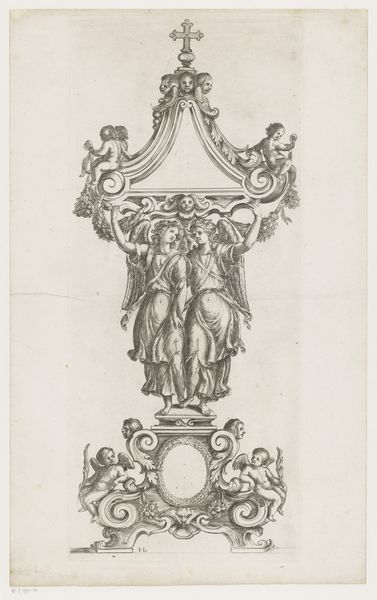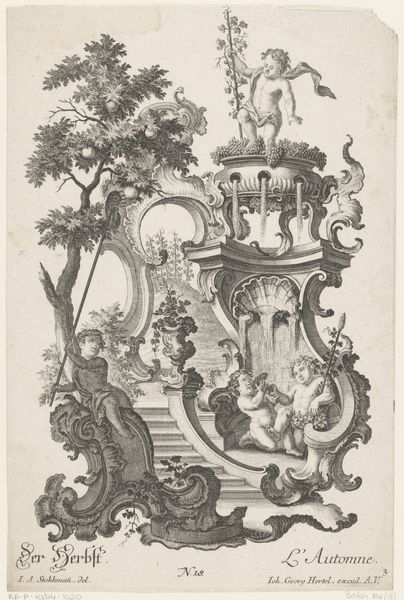
Architectura von Ausstheilung / Symmetria und Proportion der Fünff Seulen 1598
0:00
0:00
drawing, print, pen, engraving
#
drawing
#
baroque
# print
#
fantasy-art
#
figuration
#
pen-ink sketch
#
men
#
line
#
pen work
#
pen
#
engraving
Dimensions: Overall: 14 9/16 x 10 5/8 x 1 9/16in. (37 x 27 x 4cm)
Copyright: Public Domain
Editor: This detailed print from 1598, "Architectura von Ausstheilung" by Wendel Dietterlin the Elder, presents a wildly ornamented fountain design. It's packed with bizarre figures and swirling lines; almost grotesque, yet fascinating. What strikes you when you look at this image? Curator: What strikes me is the demonstration of power and status, typical of the era. Dietterlin’s designs, though often impractical, were hugely influential. This print, with its exaggerated forms, speaks to the complex relationship between art, architecture, and princely ambition. Editor: Princely ambition? How so? Curator: These extravagant designs weren't necessarily meant for actual construction. They functioned more as propaganda, visual testaments to the patron's wealth and refined taste. Consider the context of the late 16th century. Art became a tool in self-representation of the elite, showcasing knowledge of classical motifs filtered through the lens of baroque extravagance. This fountain, overloaded as it is, exemplifies this tendency. Editor: So, the function of art shifted. Instead of *being* functional, its function became about social meaning? Curator: Precisely! What we perceive as ‘fantasy art’ was often deeply embedded in social realities. Prints like this circulated amongst architects and patrons, disseminating ideas and influencing the built environment. These images, filled with symbolic forms, played a crucial role in establishing an aesthetic vocabulary. The image projects power. The fountains of this type became powerful vehicles for political messaging. What do you think about its accessibility to the masses? Editor: So it's this intricate play between aspiration, classical references, and the raw assertion of authority. I hadn't thought about it that way before! Curator: It gives you a better understanding of how art served to define the socio-cultural hierarchies of the period, doesn't it? Editor: Definitely. Looking closer at the historical setting really unlocks layers of meaning.
Comments
No comments
Be the first to comment and join the conversation on the ultimate creative platform.
